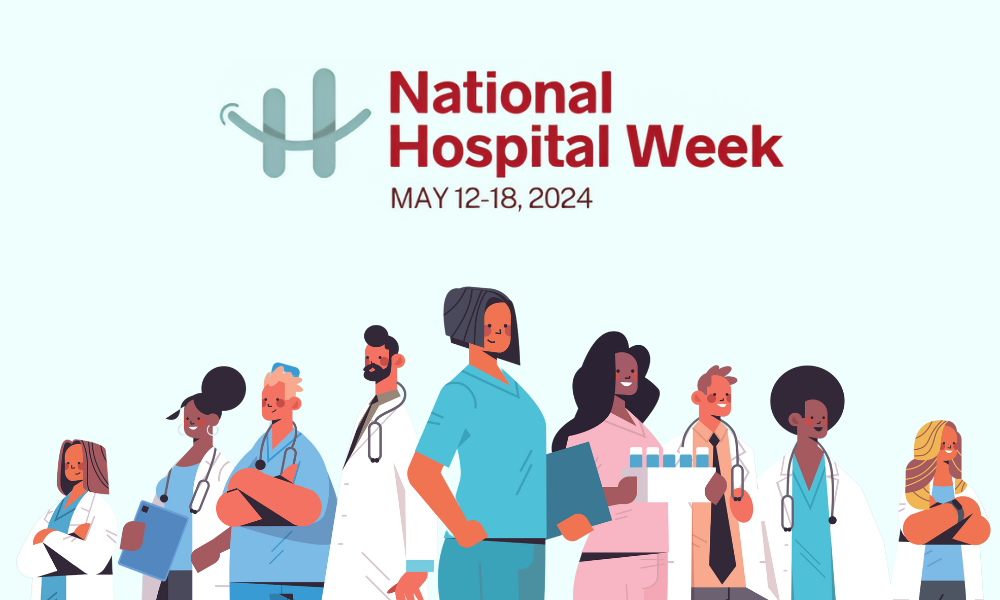Locums CME is a bi-weekly roundup of recent news that matters to locum tenens providers. Stay in the loop on what’s new in the locums industry, and make the most of the locum tenens lifestyle with our fresh finds. Here’s what’s in store for you in Locum CME #13:
- ChatGPT Outshines Physicians in Quality and Empathy for Online Patient Queries
- How to Prepare for a Career Transition to Locum Tenens
- 3 Steps to Building a Locums Schedule That Fits Your Lifestyle
- How Locums Can Get The Most Out Of Orientation
- Tips for Onboarding at Your Next Locum Tenens Assignment from Dr. Nicholas Kusnezov
- Addressing Mental Health Access, Suicide Risks, and Burnout in US Healthcare Workers
- Tackling Burnout in Healthcare: 9 Lessons Learned from Health System Leaders
- Improving Patient Care and Practice Efficiency with Team-Based Care
- Enhancing EHR with AI: One Hospital’s Approach to Automating Administrative Tasks for Physicians
- Socially Speaking: Social posts of note from CHG Healthcare, LT.com, AHA & more.
- Physician Burnout Drives Growth in Side Gig Economy: Report Reveals 86% Seeking More Autonomy or Early Retirement
- Streamlining Physician Licensing: The Role of the Interstate Medical Licensure Compact Commission
- Moving Beyond Fee-for-Service: The Urgent Need for a Restructuring of Primary Care
- Best Practices for Telehealth Center on Comfort, Aim to Empower Patients
Friend or Foe? ChatGPT Outshines Physicians in Quality and Empathy for Online Patient Queries
(From News Medical Life Sciences, 5/2/2023)
A study published by JAMA Internal Medicine revealed that a majority of the people it surveyed preferred responses to medical questions from ChatGPT over responses made by actual physicians: 78.6% of the 585 evaluations said they preferred the AI response rating it “significantly higher for both quality and empathy.”
This was a cross-sectional study where researchers drew at-random 195 exchanges in response to a patient question asked over a Reddit thread in the subreddit r/AskDocs.
Healthcare professionals created a new chatbot session and tested it against responses from real doctors. They used the original full text of the question from the Reddit thread as the basis for the chatbot’s response, and there were no preliminary questions to the chatbot that could promote any bias. Participants rated both the chatbot and physicians on quality and empathy, from 1-5 with a higher score indicating better performance.
The proportion of responses rated either equal or better than 4 was higher for the chatbot and equated to 3.6% higher quality in responses.
One of the conclusions drawn from this was that AI could easily take away some of the after-hours administrative tasks from physicians while also helping answer more general medical questions from patients who turn to the internet for guidance.
ChatGPT has been recognized for its potential to write human-like responses on topics and could be useful in helping patients who turn to social media forums for answers. It could potentially also help patients avoid unnecessary clinic visits and help patients who need flexibility around their doctor visits.
Your Locums Prescription
(From Staff Care, 5/8/2023)
Many questions arise as you look to make a career transition from a permanent physician or advanced practice practitioner to a locum tenens role. The switch is simpler than you might think, though. There are three steps you can take now to prepare yourself for a locum tenens role.
1. Understand why you want to try locum tenens
Each provider could come up with their laundry list of reasons why they would want to try a locum tenens career. Locum tenens allows providers to choose their own adventure and build their own part-time or full-time schedules in a variety of different locations. Find what appeals most to you and use that to prioritize your search.
2. Think of how it affects others
Your friends, family, and patients is impacted by your move, and that’s something you have to consider when thinking through the pros and cons of this career choice. There are some important questions to ask yourself:
- Am I truly open to work in any location?
- Should I take my family?
- Will I need to sublease my apartment or find someone to rent my home?
Make sure you weigh the options and ask yourself the important questions that might be a deal-breaker in your decision.
3. Revamp your CVs and seek expert advice
Update your personal and professional goals and your CVs, and take the time to network with other providers who have experience in locum tenens. This gives you valuable insight into the career and recommendations for what to do next.
If you’re going to pursue a locum tenens career, you need to be flexible and open-minded about the assignments you take on. You will constantly be adapting to new situations, but with proper preparation and a willingness to embrace new opportunities, you can successfully transition into a rewarding career path.
(From Cross Country Healthcare, 4/17/2023)
A career in locum tenens can give healthcare providers the chance to plan their career around their lifestyle instead of their lifestyle around their career. A locum tenens gig opens you up to the opportunity of more travel, flexible schedules, higher wages, and the chance to gain experience and learn new skills in different hospital settings.
Sound too good to be true? It’s not. Here are a few steps you can take today to prepare for the locum tenens schedule that best fits your career goals and lifestyle:
1. Write out your short-term and long-term goals
Is this a short-term or long-term move? Are you using this to collect extra income? Are you looking to travel or spend more time with your family? Create a list of your goals based on the answers to these questions and refer to these when discussing your locum tenens opportunity with a recruiter.
2. Talk to a recruiter and give yourself time to apply
If you plan to work across state lines, it is essential to allocate time for licensing, credentialing, interviewing, and locum tenens onboarding processes. It’s important to organize your CV, cover letters, and supporting documents in advance to make them readily available for your recruiter. Getting these documents in order can take time, so allow plenty of time to prepare and expedite the application process.
3. Create a method to stay organized and on top of your assignments
Regardless of the method you prefer, whether it’s electronic or physical, maintaining a calendar to keep up with your assignments is crucial. This will help you stay organized, avoid missing important events, and keep track of your upcoming commitments.
You can find more tips to help you build your locum tenens schedule here.
(From Wapiti Medical Staffing, 4/19/2023)
If you’re on a locum tenens assignment, an orientation can seem like a waste of your time. However, orientation is one of the best times to study and understand the hospital’s culture, policies, and mission. It will also help you introduce yourself to the people you work with daily.
When preparing for hospital orientation, it is important to familiarize yourself with policies and mission statements by visiting the hospital’s website first. This can help get those questions out of the way early so you can engage effectively during the orientation.
Taking thorough notes is essential during orientation. Jot down important information that will serve as a useful reference and help you remember any additional queries you may have. Pay close attention when discussing policies and procedures, as they can differ between facilities.
Making connections with colleagues, nurses, and support staff during hospital orientation can also be valuable. Despite the temporary nature of locum tenens work, establishing relationships can contribute to a more pleasant assignment.
Approaching hospital orientation with the right mindset is crucial for a successful experience. Embrace the opportunity to ask questions, take detailed notes, and introduce yourself to your colleagues.
(From Locumstory, 4/27/2023)
A new locum tenens assignment can often seem daunting. Dr. Nicholas Kusnezov, a nationally recognized, board-certified, and fellowship-trained orthopedic surgeon currently practicing in Southern California, offered advice on the best practices he’s used over time to help him better understand the environment he’s working in when on assignment.
Dr. Kusnezov broke down five different aspects of the onboarding process: researching the facility, asking questions during orientation, familiarizing yourself with the electronic medical records, acting “professionally,” and making good first and last impressions.
Taking the time to familiarize yourself with key locations and the personnel you will need to interact with is key to starting an assignment on the right foot, Kusnezov says. If you’re a surgeon, this may include identifying the ER, OR, orthopedic ward, and important contacts such as the hospital operator, ER front desk, OR front desk, etc.
Beyond that, though, it’s important to learn different nuances of each facility, like the medical records systems. That’s why Kusnezov stresses the importance of asking questions – lots of them – during the orientation.
Medicine is a business relationship, he says. So you need to act professionally, make sure that you make good first impressions, and establish working rapport with the staff at the facility.
Physician Wellness Retreat
Editor’s Note: May is Mental Health Awareness Month, a time dedicated to raising awareness and promoting the importance of mental well-being.
This month serves as an opportunity to educate the public on these issues and encourage those who may currently be struggling. It’s crucial to give our emotional support and work to understand those facing these challenges. Unfortunately, the social stigma surrounding mental health can have a significant impact on healthcare providers, and healthcare professionals may face greater barriers in seeking help.
Healthcare providers face unique challenges in accessing mental health services and are at a higher risk for burnout, anxiety, and suicide. They need all of our support to thrive rather than just survive.
The articles below and resources throughout this section can help assist providers in overcoming barriers and reducing the stigma while also serving as a list of important resources for healthcare providers.
(From KevinMD.com, 4/28/2023)
Doctors and nurses are often celebrated as heroes, praised for their self-sacrifice in the public eye but left to face adversity in isolation. However, high suicide rates among US healthcare workers demonstrate the need for better support systems. In 2017-2018, 729 nurses died by suicide, and physician suicide rates continue to increase due to multiple barriers to accessing mental health services.
The Dr. Lorna Breen Health Care Provider Protection Act aims to address this issue, but only a few hospital institutions received funding in the first grant process. Increasing funding to reach more healthcare providers, especially those in rural and smaller organizations, is crucial.
The Dr. Lorna Breen Heroes’ Foundation provides resources to remove barriers to mental health access that apply uniquely to licensed healthcare workers, such as licensing applications, credentialing applications, and hospitals.
COVID-19 has greatly impacted the mental health of healthcare workers. Long hours, exposure to the virus, and caring for critically ill patients have taken their toll. Dr. Lorna Breen was an emergency physician at New York-Presbyterian Allen Hospital who died by suicide in April 2020. Breen was infected with COVID-19 after treating patients in her hospital. She recovered and returned to the hospital, but the overwhelming stress of the circumstances led to her suicide.
This highlighted the immense pressure and burden placed on healthcare workers during the pandemic and the stigma that surrounds seeking mental healthcare. It is crucial to address the mental health needs of healthcare workers and provide them with the necessary resources and support to cope with the challenges they face.
The Dr. Lorna Breen Healthcare Provider Protection Act and the foundation aim to reduce burnout and promote mental health in the health workforce. Although funding helps address healthcare workers’ mental health struggles, much more must be done.
The broader focus of grants on operation improvement will help address the implications of burnout across the healthcare system, not just on providers but also on patients.
(From Becker’s Hospital Review, 5/3/2023)
Hospitals and healthcare systems are taking a multifaceted approach to address the healthcare burnout problem. Hospitals are implementing new initiatives such as respite areas, mental health counselors, recharge rooms, and other holistic programs.
These measures aim to combat burnout by reducing professional stress and increasing job satisfaction through emotional and mental health support, promoting work-life integration, and creating meaningful connections.
Leaders from healthcare systems such as NYU Langone Health, Banner Health, Sanford World Clinics, and Henry Ford Hospital actively address burnout through different initiatives:
- NYU Langone Health’s Lavender Response Team dispatches trained volunteers to support hospital employees emotionally under challenging situations.
- Banner Health’s MyWell-Being program focuses on health, wealth, growth, community, and purpose.
- Sanford Health’s clinician wellness councils provide emotional and mental health support and promote work-life integration.
- Henry Ford Hospital’s recharge rooms offer a calming environment for team members to relax and reset.
Healthcare leaders agree addressing burnout requires a multifaceted approach and no single solution. The pandemic has underscored the importance of tackling burnout. Hospitals and healthcare systems need to continue their efforts to reduce burnout and increase job satisfaction for healthcare workers.
Creating supportive work environments for healthcare providers helps us recognize the humanity of healthcare workers and can go a long way to addressing these burnout issues.
(From American Medical Association, 4/24/2023)
Implementing team-based care in your private practice can address severe burnout and heavy workloads while improving patient care and reducing expenses. Dr. Kevin D. Hopkins, Senior Physician Advisor for the AMA, says that putting a focus on team-based care doesn’t just help physicians. In an AMA Private Practice Simple Solutions session, he talked about how it could also improve the flow and quality of patient care, ultimately making patients satisfied with their level of care.
Hopkins says physicians are experiencing “unsustainable” burnout trends. Studies show physicians can experience up to 32 hours of work after hours each month. Team-based care addresses these issues by reducing unnecessary, low-value work and creating workflows that facilitate sharing vital, valuable work.
Team-based care also enables private physician practices to implement innovative workflows and practices that directly affect time and efficiency, such as pre-visit planning and annual prescription renewals, which could reduce office calls for medication renewals, saving up to $26 per visit.
Practices can optimize their processes and eliminate unnecessary activities by creating a change team representing employees from various work levels and skill sets. The team can design team-based care workflows aligned with their goals and gather a pilot team of decision-makers, frontline workers, and staff interested in improving the practice.
(From Health Leaders Media, 5/1/2023)
Healthcare systems are using new AI technology to help reduce the administrative burden on their staff. To address physician burnout, Baptist Health, a system of hospitals across Kentucky and Indiana, has started using AI to optimize electronic health records (EHR) and limit the number of messages sent to physicians.
Baptist Health also currently uses Nuance’s Dragon Ambient eXperience, an AI software that generates a summary note of the interaction between physicians and patients, allowing physicians to avoid dictating notes and reducing administrative tasks.
Remote patient monitoring (RPM) is another technology tool Baptist Health has implemented to reduce hospital readmissions and help physicians avoid burnout. The current health device, which patients wear on their arm, records multiple parameters like heart rate and pulse oximetry. The data then gets integrated into Baptist Health’s EHR, allowing physicians to monitor their patients remotely and respond to concerns in real time.
The AI can detect relevant patient information from conversations between physicians and patients and create individualized tasks or messages for the physician. Baptist Health hopes to use this tech to help ease the administrative burden on physicians.
Socially Speaking
From LinkedIn
From Twitter
From Facebook
Doctor’s Notes
(From Doximity & Curative, 5/9/2023)
Curative and Doximity recently hosted a webinar that delved into physician burnout, administrative burdens, and physician shortage. The focus was on a report they conducted on the compensation of 190,000 licensed U.S. physicians. According to the host, 86% of physicians seek more autonomy or consider retiring early due to economic strains and workload, resulting in the side gig economy’s growth, including locums, telemedicine, and consulting. However, non-compete clauses can hinder physicians from pursuing side gigs and earning extra income.
Compensation growth for physicians has been relatively flat, with worse compensation experienced in metro cities, particularly in Oklahoma City. Physicians want to live where they enjoy and practice in a setting that aligns with their views on practicing medicine. Unfortunately, women physicians earn nearly $110,000 less than their male counterparts, even when salaries are controlled for specialty.
The webinar also revealed that Tallahassee and Springfield are the top metro cities for job postings in 2022, with a considerable need for physicians in primary specialties. Seven top 10 metro areas with the highest physician job postings appear on the Locum Tenens physician’s top ten list.
(From Hayes Locums, 5/3/2023)
Indiana recently became a member of the Interstate Medical Licensure Compact Commission (IMLC). This makes it easier for physicians to obtain additional licenses for locum tenens in participating states. The IMLC is an agreement among participating states to streamline and expedite the licensing process for physicians. Currently, 34 states, Washington D.C., and the Territory of Guam participate in this Compact, which helps funnel providers to underserved areas of the country and can significantly reduce the burden of obtaining multiple licenses for locum tenens assignments.
For locum tenens providers, the IMLC allows them to complete the physician licensing process for participating states in days or weeks rather than months. Once a physician has met the IMLC’s strict eligibility requirements, their State of Principle License (SPL) shares that information with other states participating in the Compact, significantly speeding up the physician licensing process.
Not all states have joined the IMLC, as every state has licensure requirements and bylaws, and this can make it difficult for more states to join the Compact. Emergency licensing orders issued during the onset of the COVID-19 pandemic further demonstrated the need for a faster licensing process without compromising scrutiny, and the hope is that this will prompt more states to join the Compact.
(From Medical Economics, 5/1/2023)
The profession and practice of primary care are in crisis, according to recent research published in The Journal of General Internal Medicine.
Outdated approaches to care, administration, payment, technology, and the structure of primary care contribute to physician burnout and dissuade students from entering the field, according to the research conducted in collaboration with Dr. Russell S. Phillips of Harvard Medical School.
Primary care physicians (PCPs) are trapped in a “fee-for-service” system, where payment, scheduling, and workflow software are designed for revenue management. They are expected to meet the demands of synchronous and asynchronous care, along with mountains of administrative work, and have less time to see patients who need them most.
Physicians need a clear, evidence-based restructuring centered on value, outcomes, and engagement to address the current crisis. Using patient management software, a restructured primary care team with defined roles and adequate staffing can quickly respond to patients’ needs and build trust. Asynchronous care further promotes patient engagement. The convenience means fewer patients ignore their needs or are self-triaging, only to end up in the ER.
The restructuring requires shifting to the focal point for all care. Care teams have defined roles that allow them to care for people efficiently. It will help clinicians finish tasks and documentation during their normal work hours and help them divide their time between their support staff and various levels of care for patients. Healthcare systems can effectively address the crisis in primary care by giving physicians support and clear avenues to improve their quality of care.
(From Healio, 4/27/2023)
During the 2023 American College of Physicians (ACP) Internal Medicine Meeting, Dr. Neel Naik shared his tips on maximizing the benefits of telehealth. Dr. Naik suggested physicians prepare patients for the medical experience, set up their own space, and know the system. Building trust with patients is essential, and physicians should be transparent about who is in the room with patients. Dr. Naik also recommended working with patients for physical exams, using a guided self-examination to empower them to care for themselves.
To set up a virtual exam, physicians should be comfortable with the technology and ensure that patients are mentally prepared for a medical encounter. Dr. Naik suggested using signage, greeting patients, and having them fill out forms to get them in the mindset. Establishing trust with patients requires physicians to create a safe space for medical encounters by being transparent about who will be in the room.
Physicians should work with patients for physical exams by doing a guided self-examination, Dr. Naik says. He recommended this tactic for diagnosing cases like appendicitis and empowering patients to care for themselves. By providing patients with discharge instructions and partnering with them beyond the virtual visit, physicians can maximize the benefits of telehealth.








